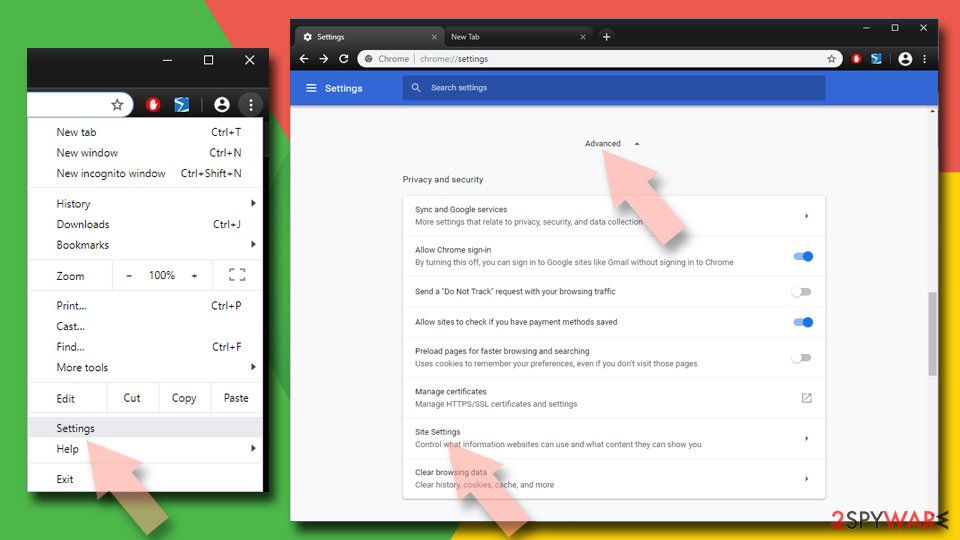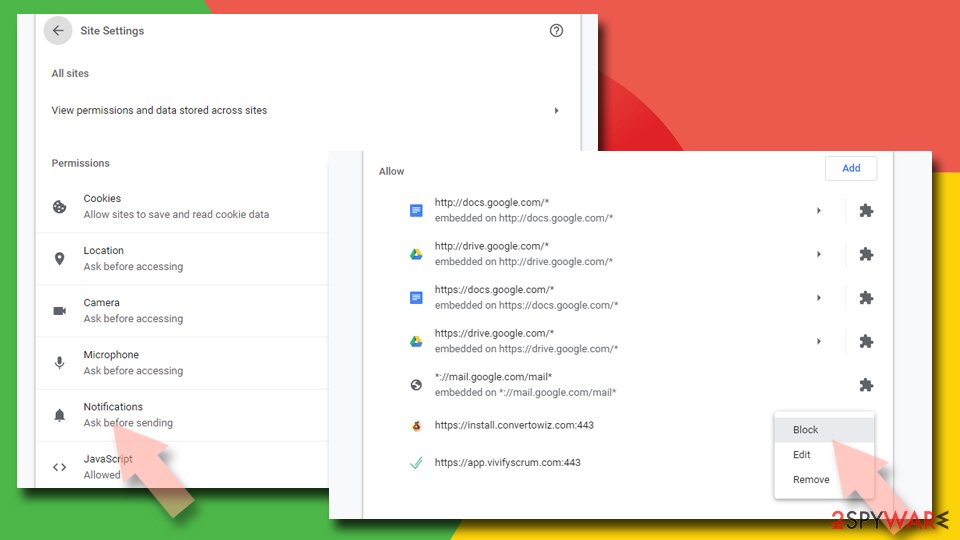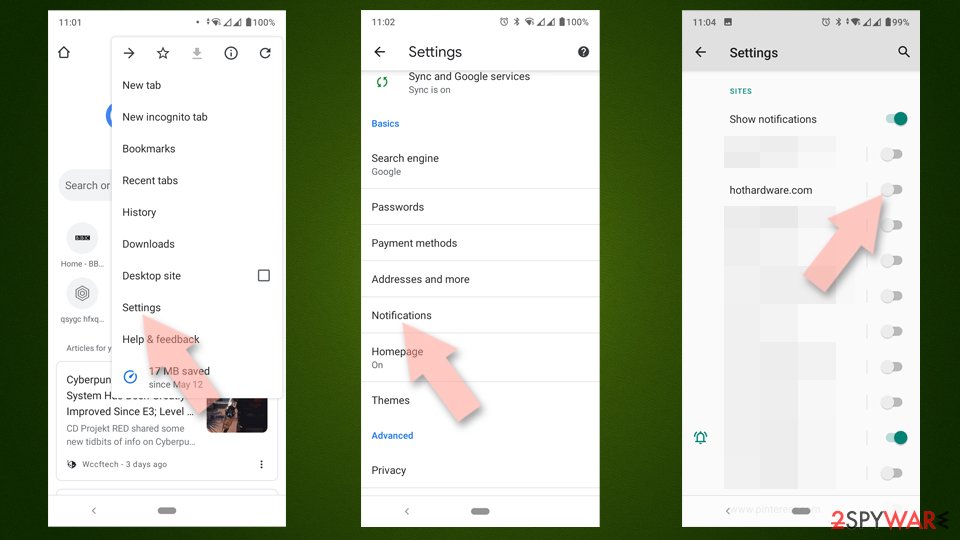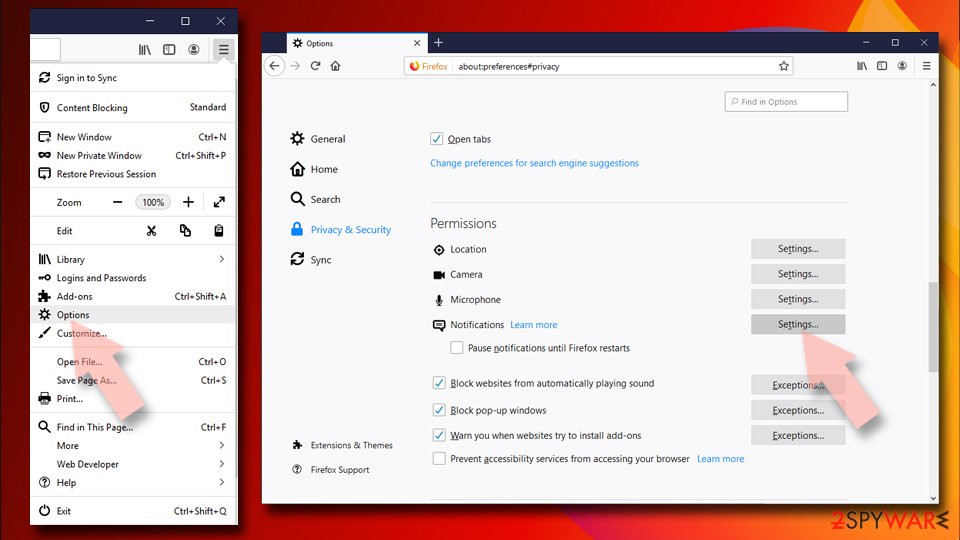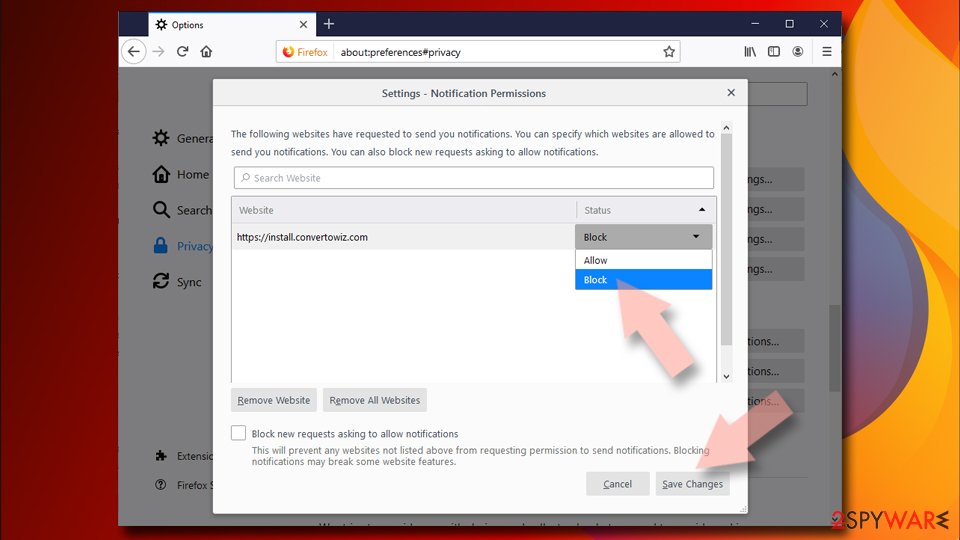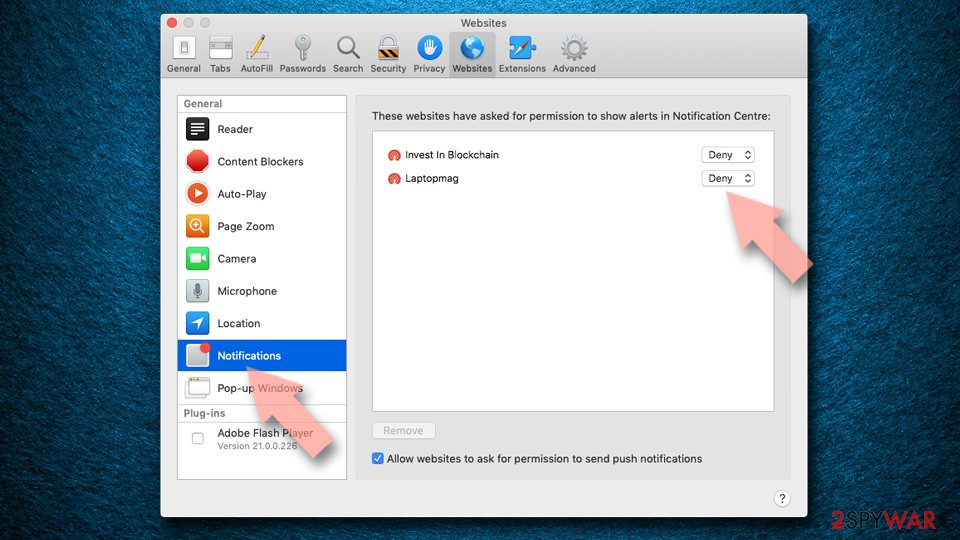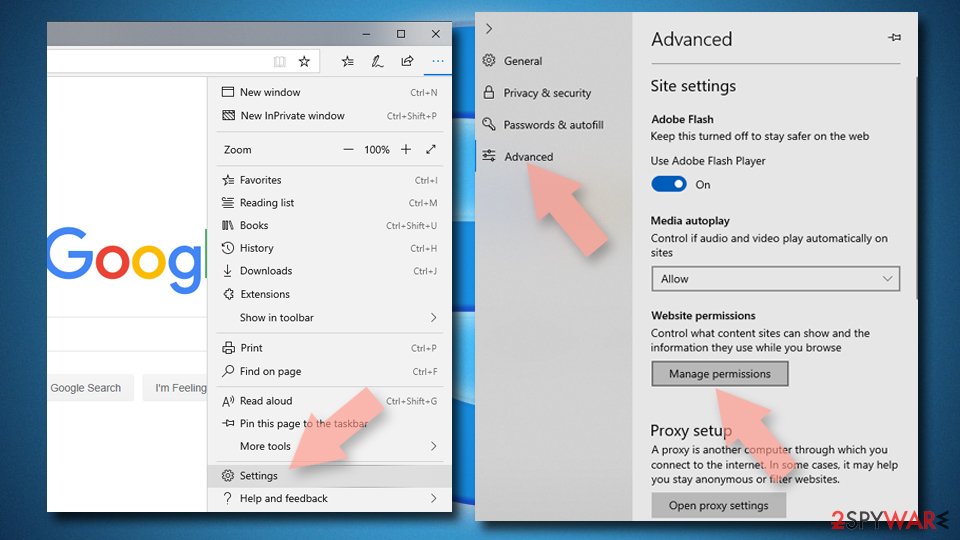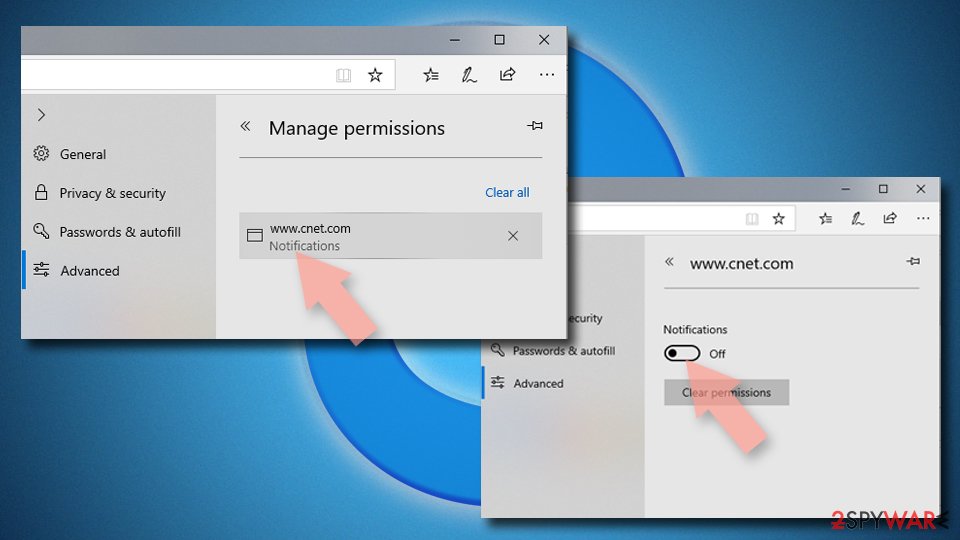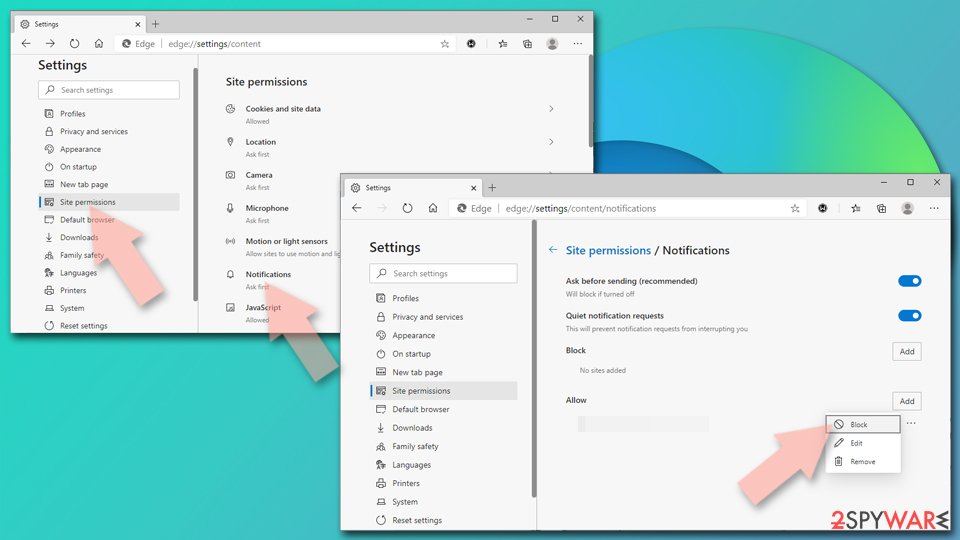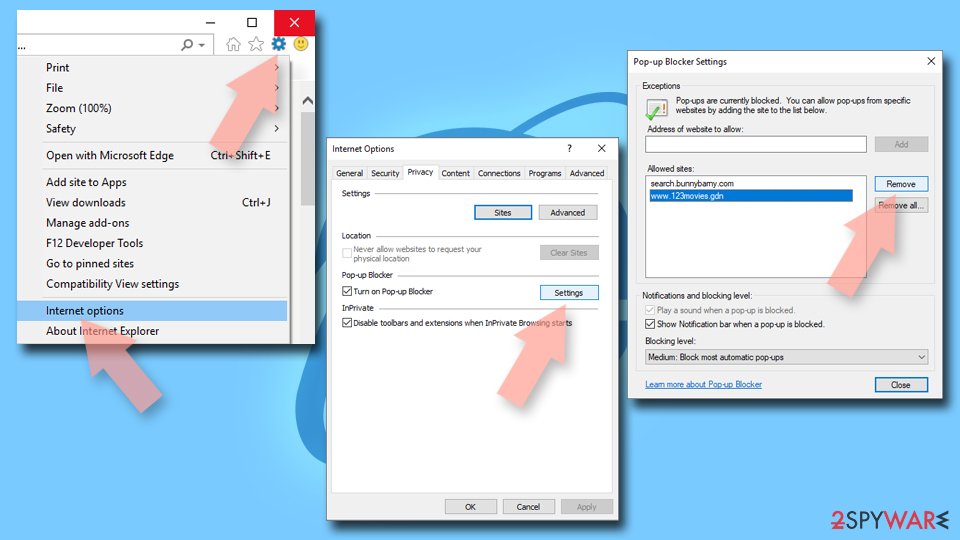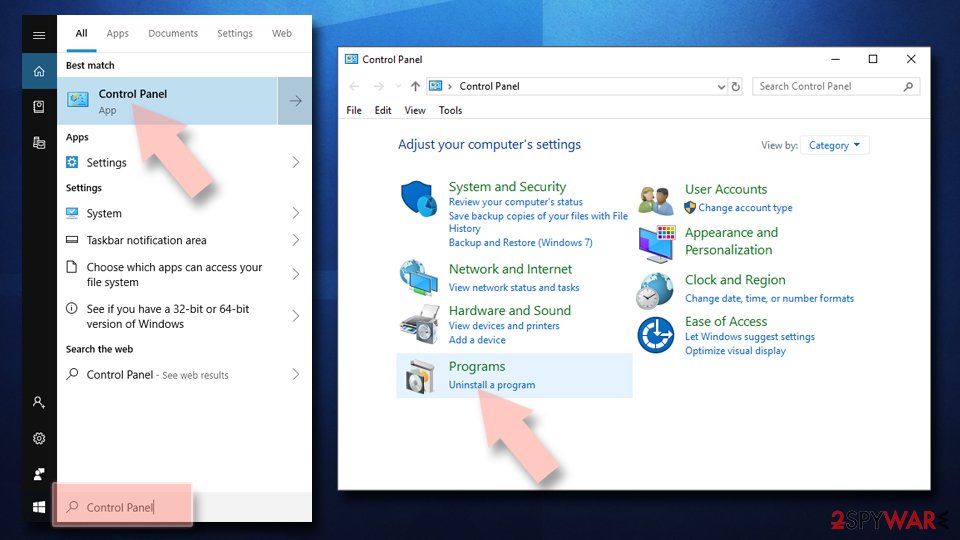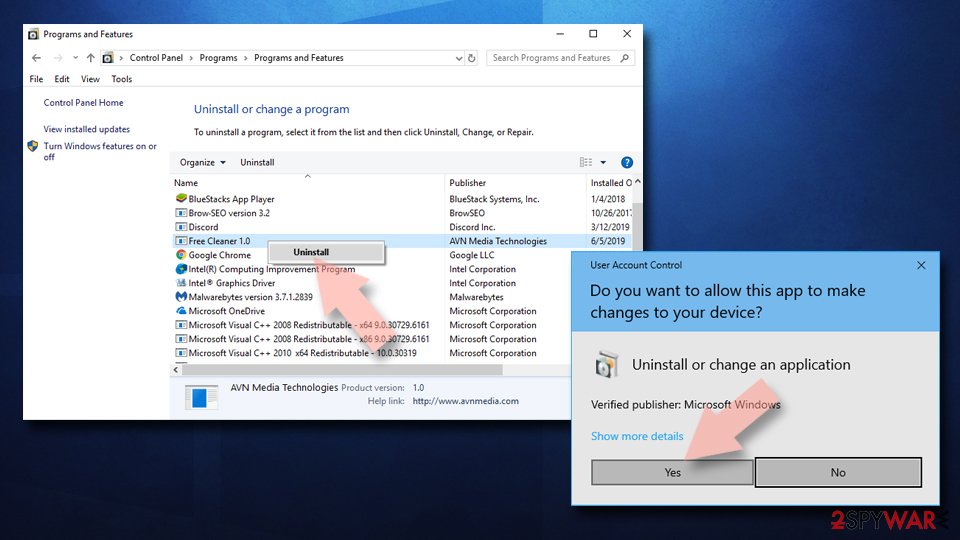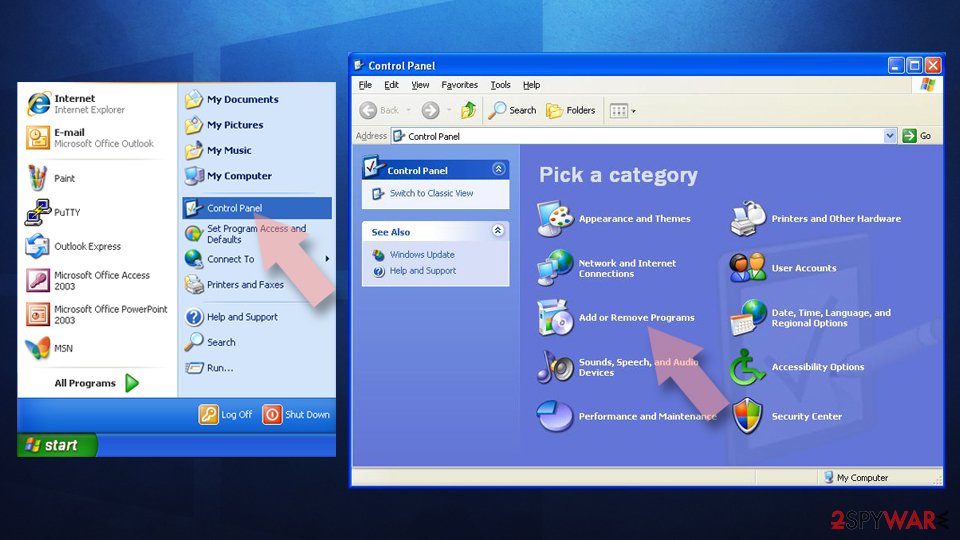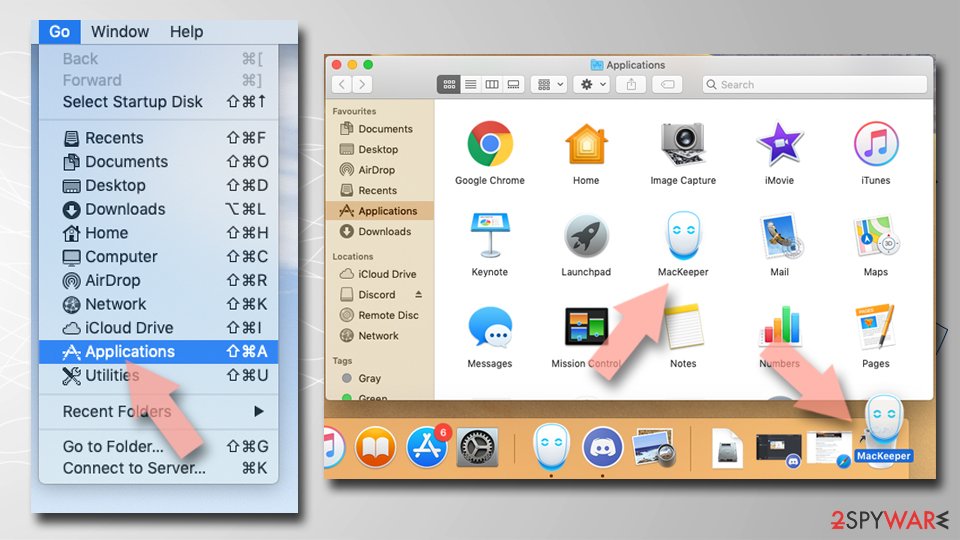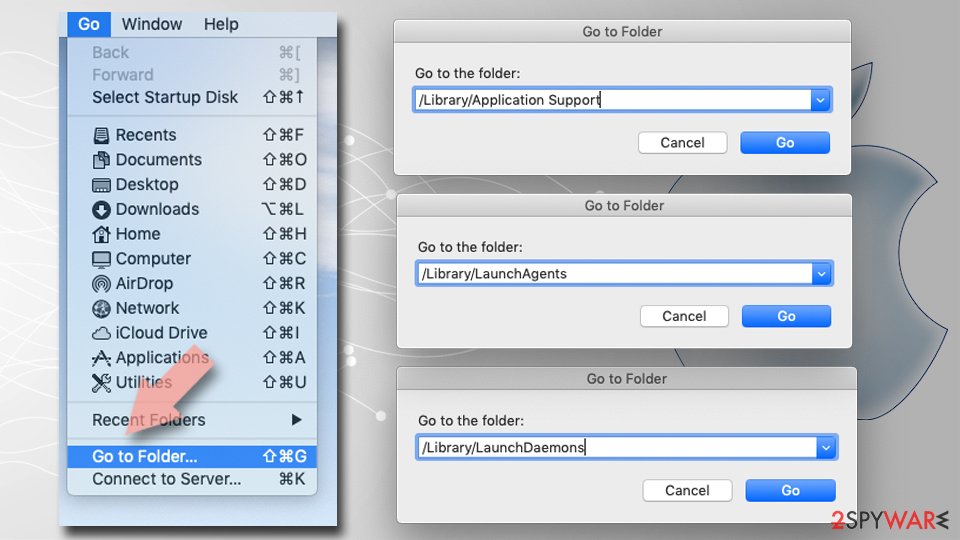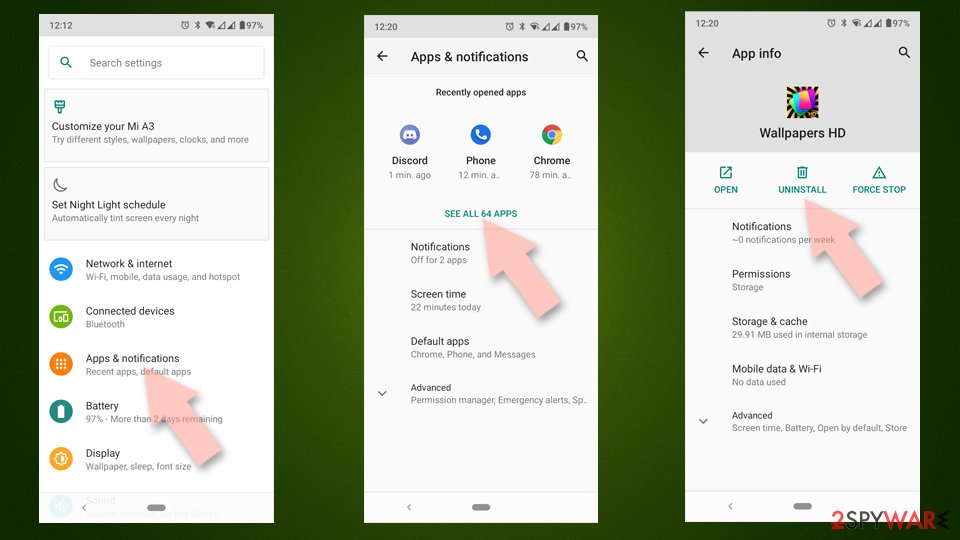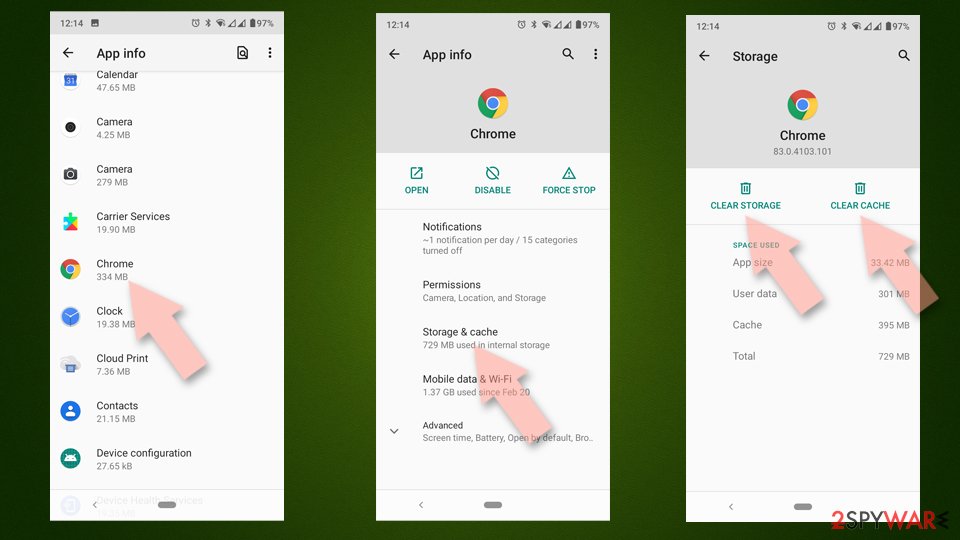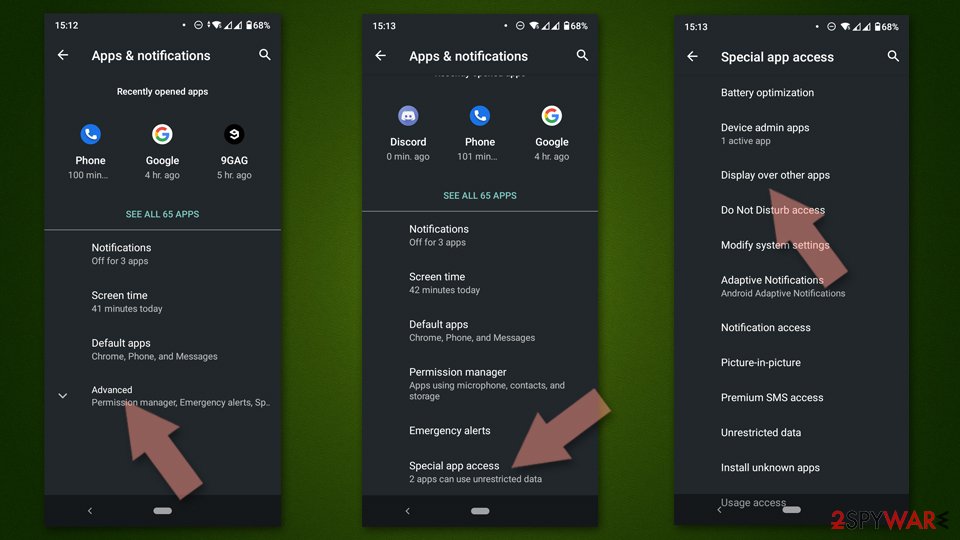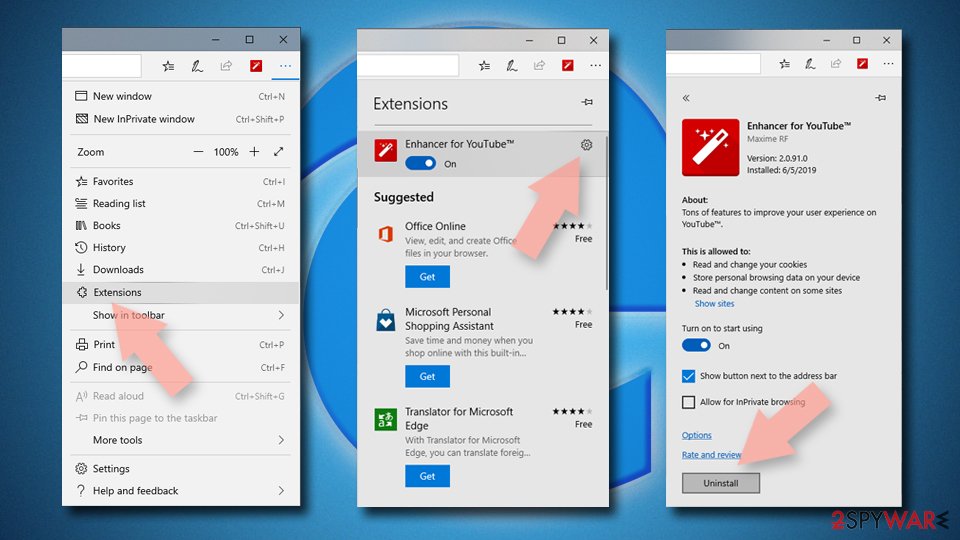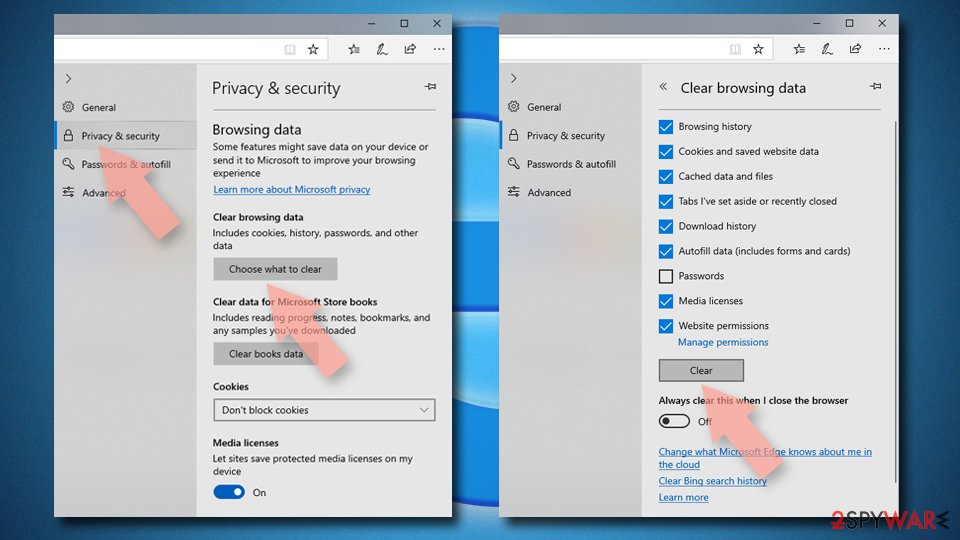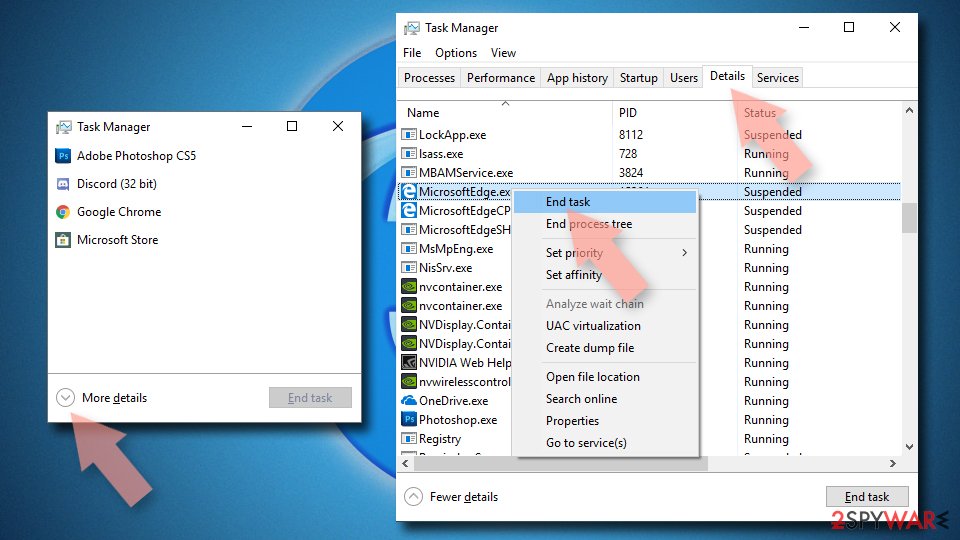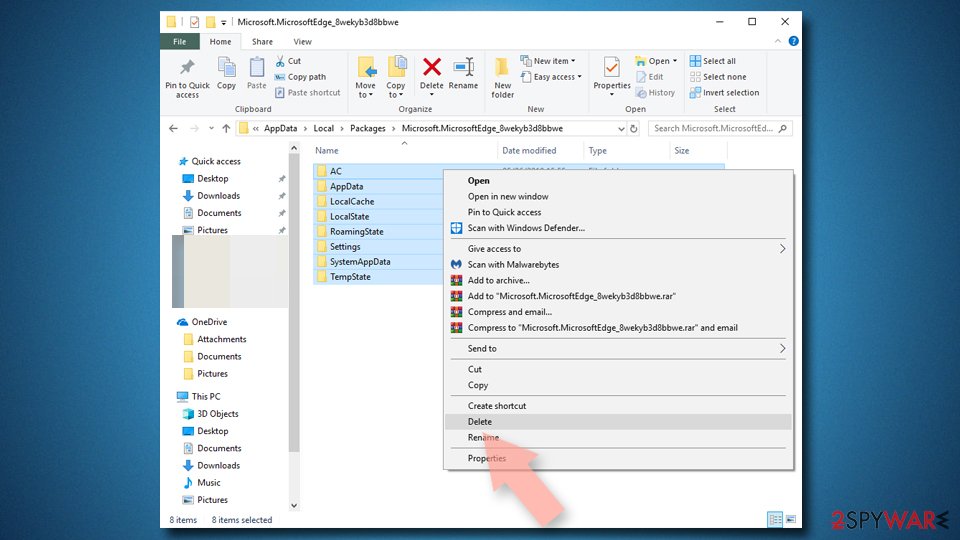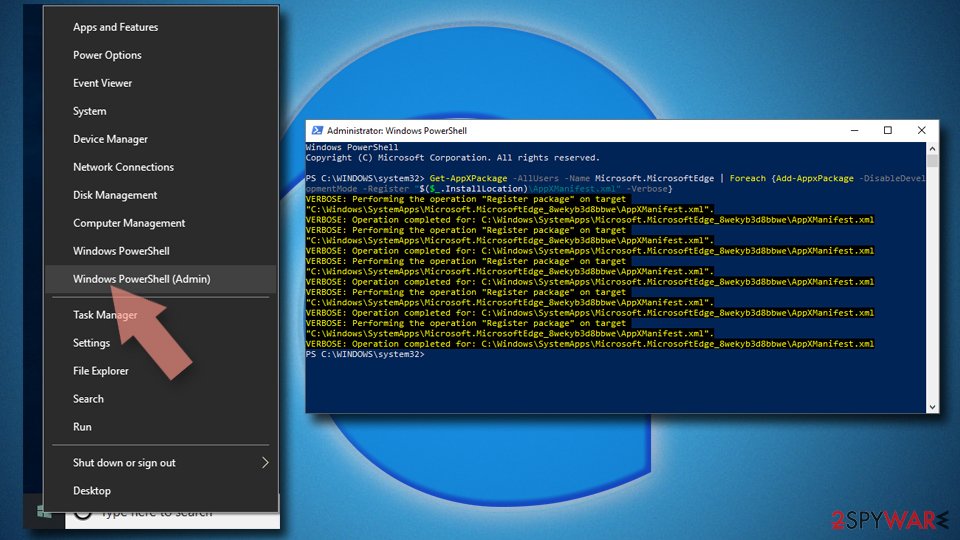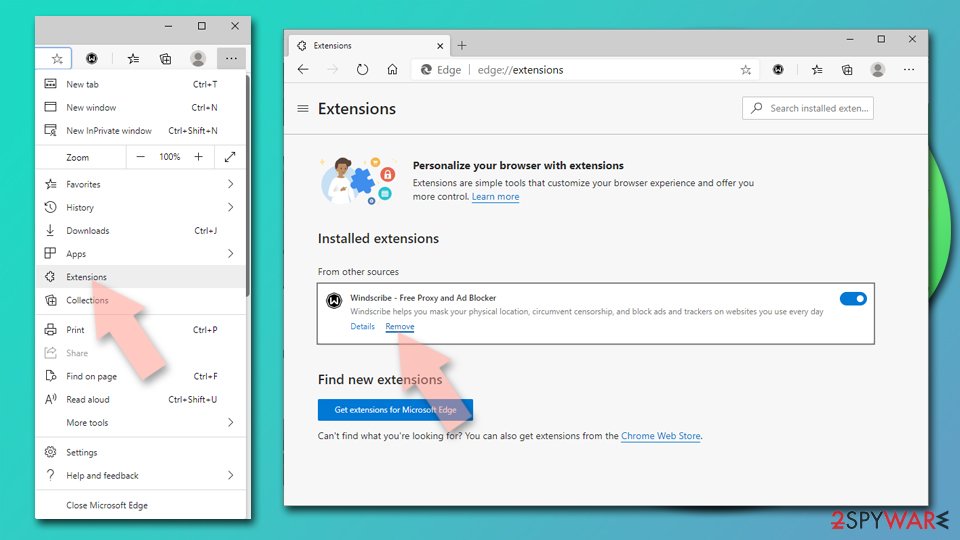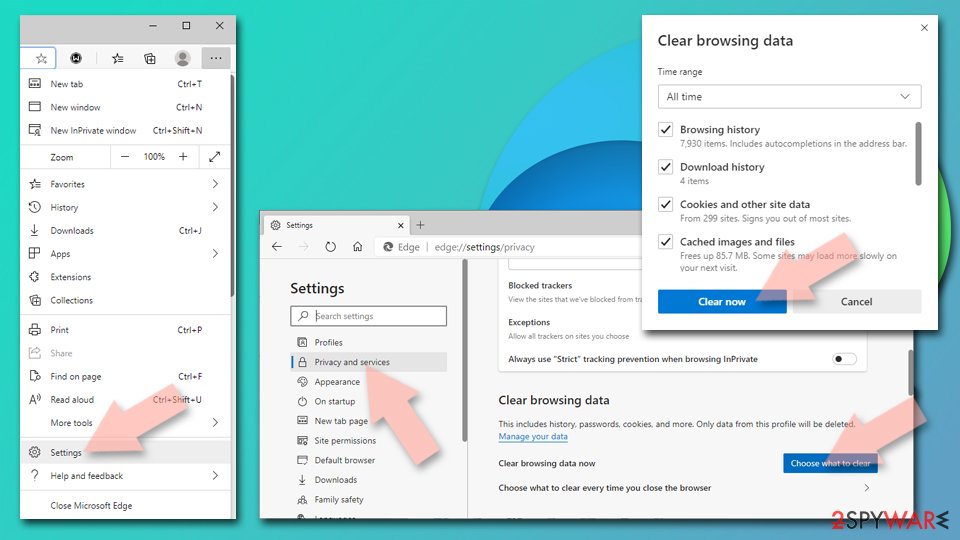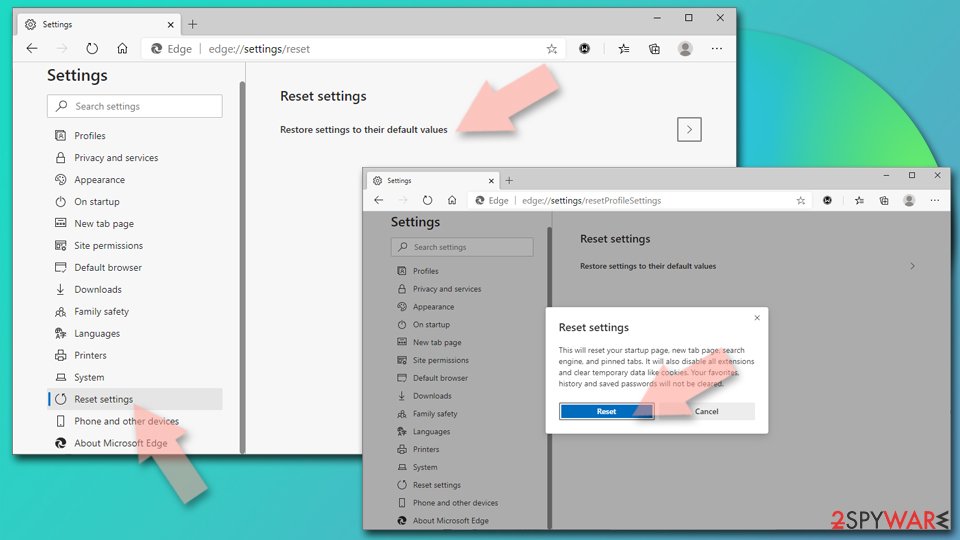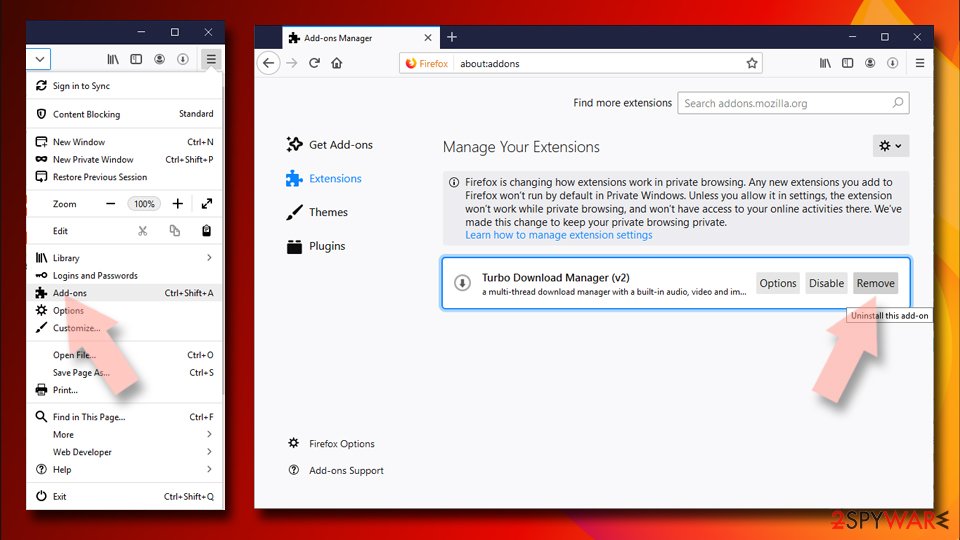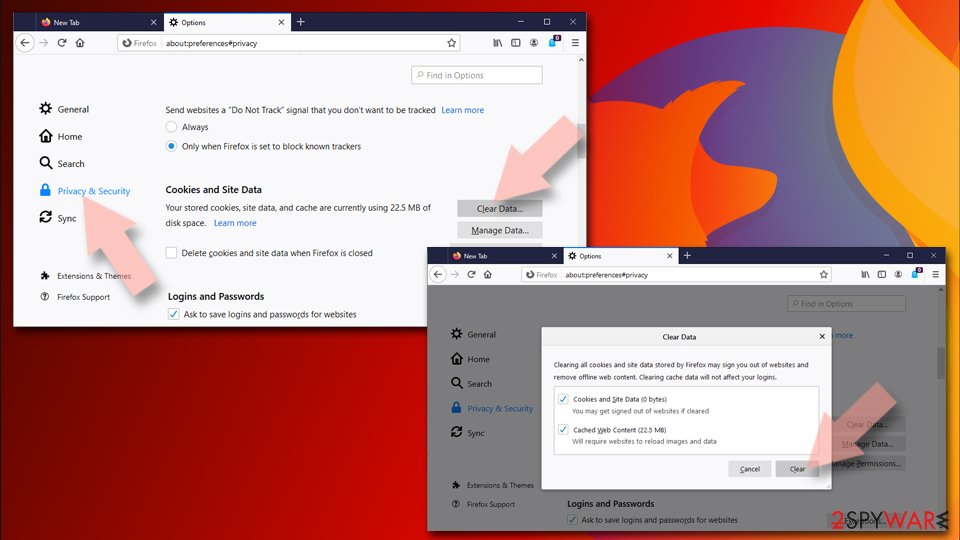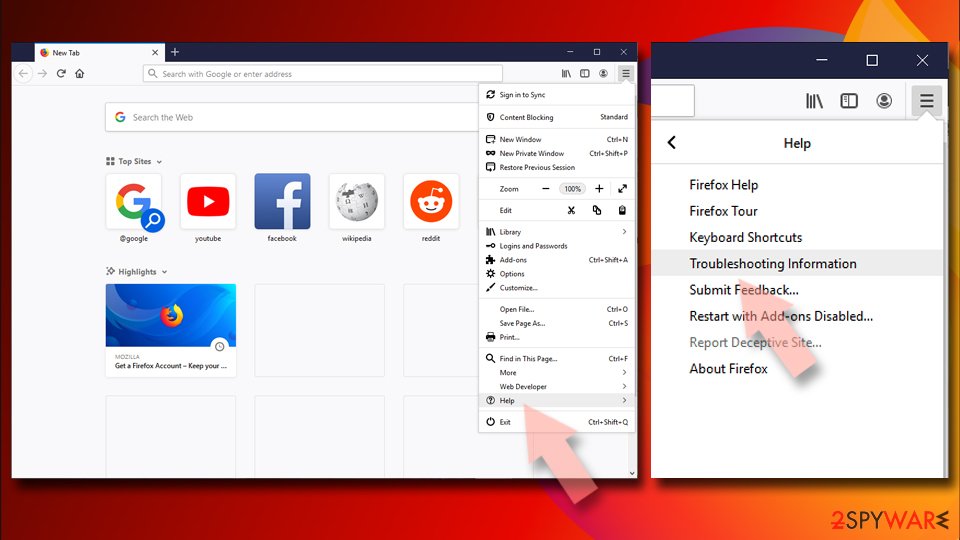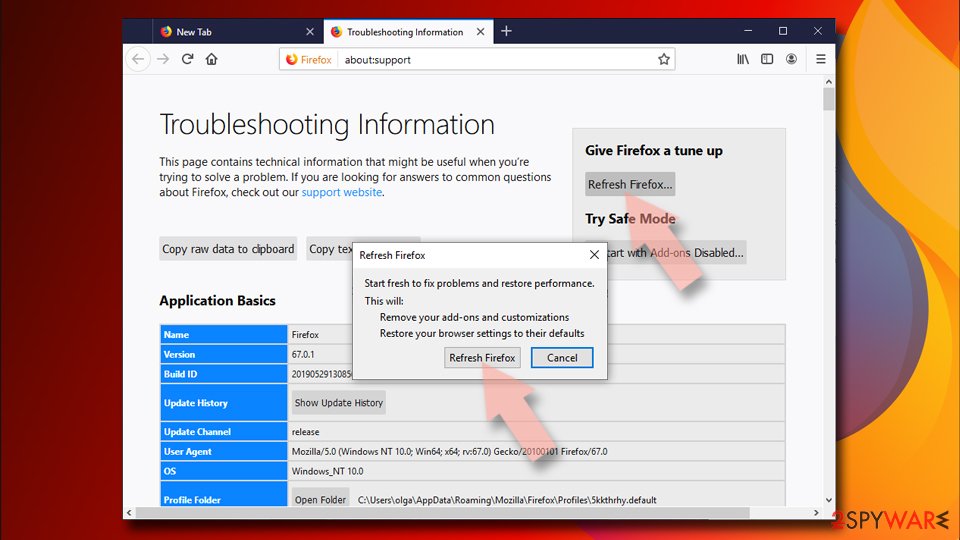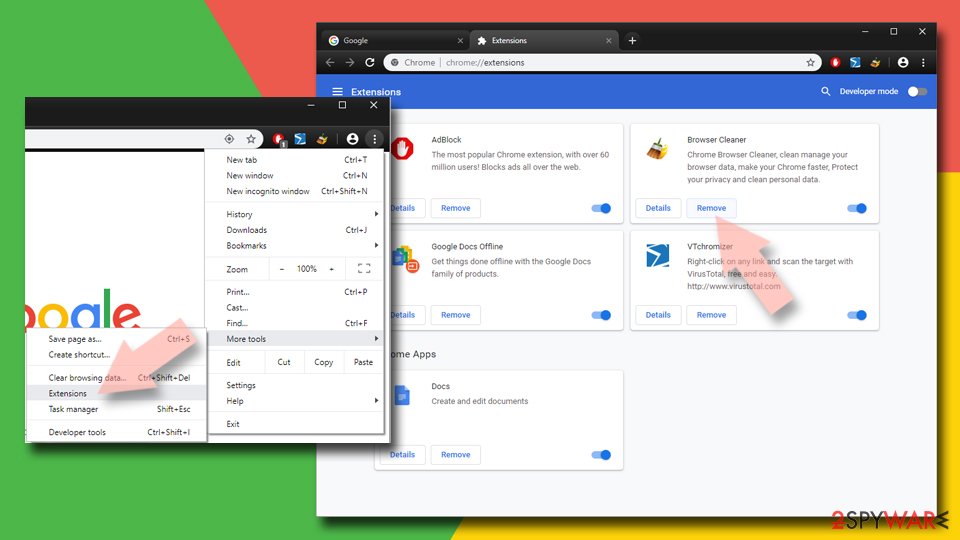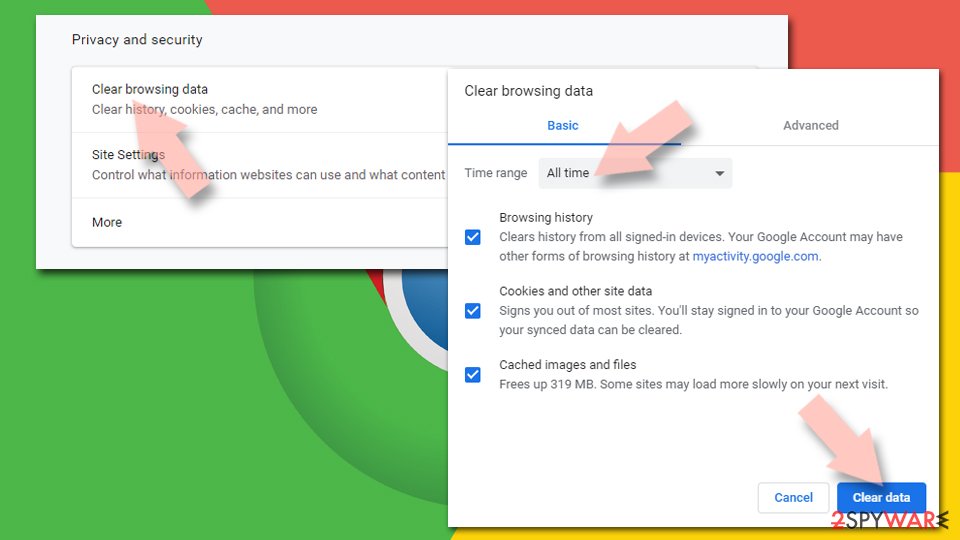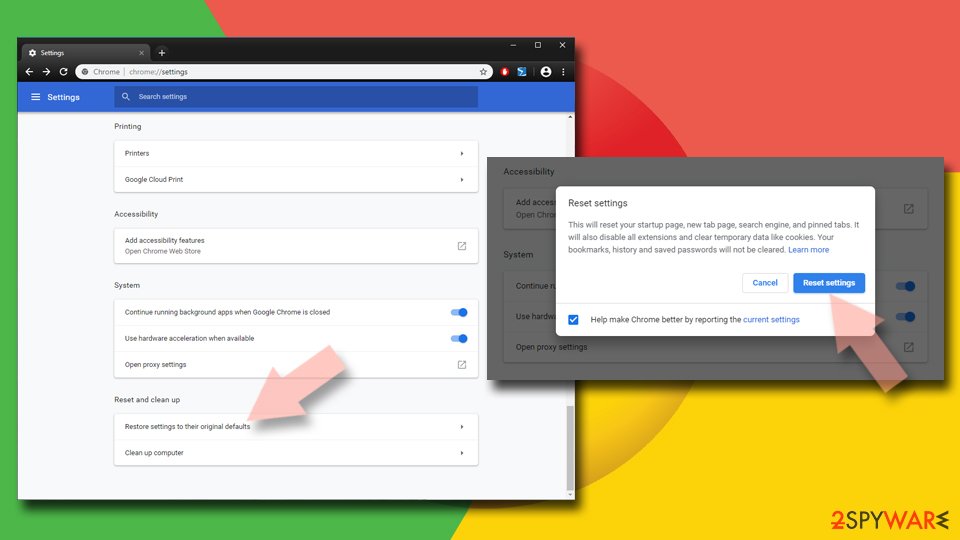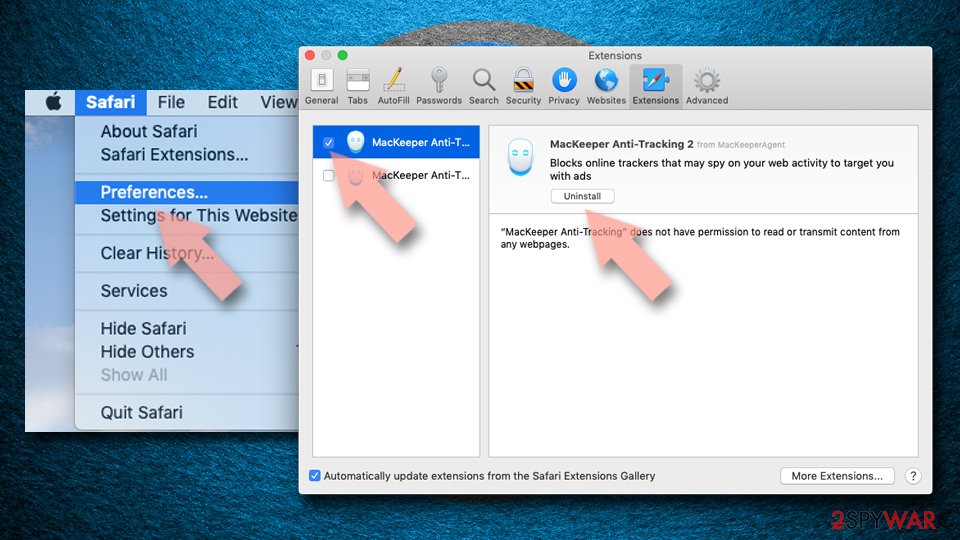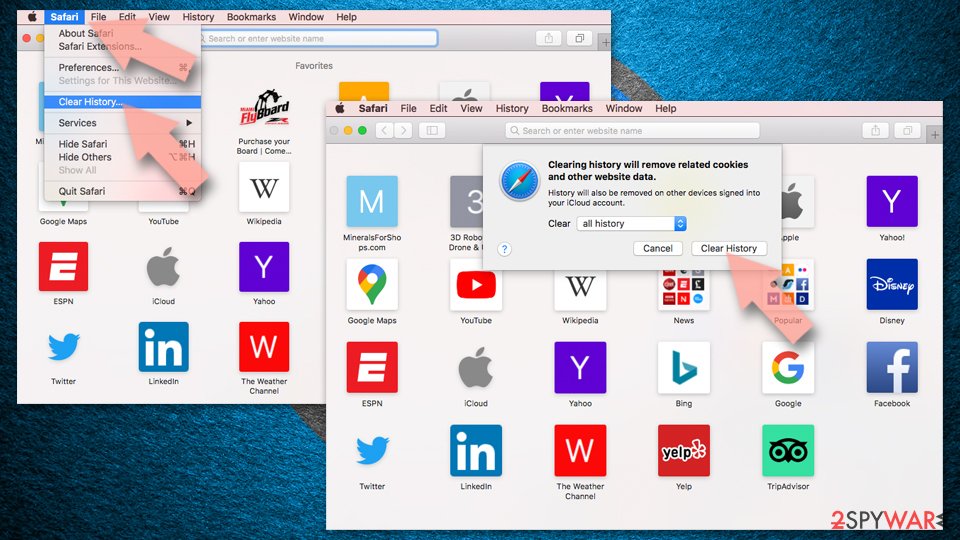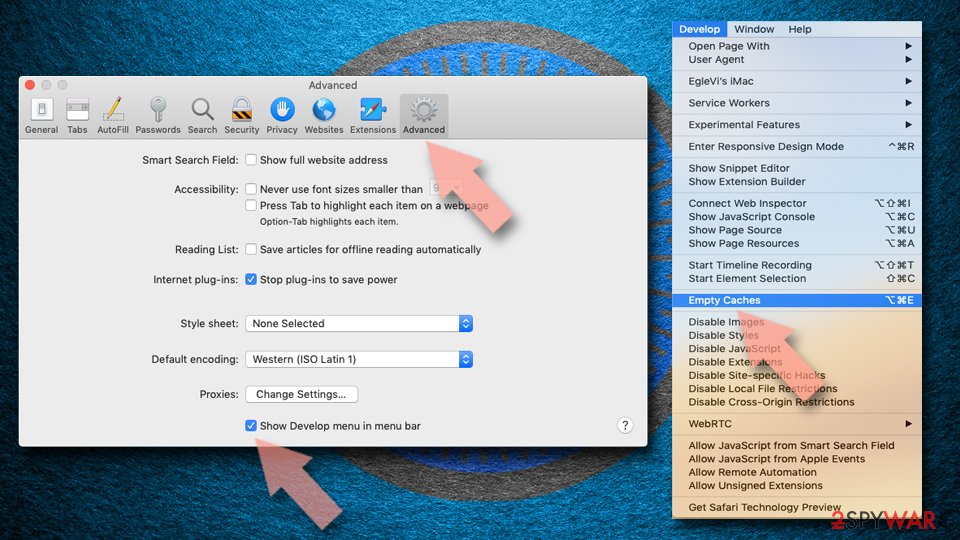Testraightphe.biz (Easy Removal Guide) - Chrome, Firefox, IE, Edge
Testraightphe.biz Removal Guide
What is Testraightphe.biz?
Testraightphe.biz – a treacherous website that uses various deceptive prompts to trick you into accepting its notifications

Testraightphe.biz is a rogue website developed to push you into pressing the Allow button by any means necessary. The prompts depend on your geolocation. They might force you to enable notifications to close the window, enter the site, download a file, continue watching a video, prove that you're not a robot, and so on. Please don't accept alerts as all of the shown prompts are deceptive.
If you accept notifications, you will be bombarded with ads. They come in the form of notifications and start popping up in the lower-right or top-right corners of your PC desktop or straight on the screen of your cell phone. They might seem alluring, but please refrain from clicking on them.
When this dangerous website opens out of the blue, i.e., without you typing in the URL manually or clicking on ads on questionable pages, that means you have adware or other potentially unwanted programs on your device. We'll explain how to eliminate any threats from your device and your browser and let you know more about them.
| name | Testraightphe.biz |
|---|---|
| Type | Adware, redirect virus, potentially unwanted program |
| IP address | 52.206.71.220 |
| Purpose | Generate traffic to affiliated sites by showing ads and causing redirects |
| Symptoms | New tabs with questionable websites open out of nowhere, ads displayed as notifications, slower browsing speed |
| Risks | Malware infections, PUP installation, privacy issues |
| Distribution | Software bundles, deceptive ads, fake Flash Player updates |
| Removal | To safely delete any cyber threat from your device, you have to use dependable security tools |
| System health check | Tidy system files and settings guarantee a stable working environment. Infections may disrupt them. To resolve any system issues and maintain values, use the powerful FortectIntego system repair tool |
Push notifications are a convenient way for websites to inform their subscribers of sales, breaking news, the latest sports updates, and so on. But cybercriminals found a way to misuse this legitimate service. They create websites like Addedprint.com, Time4news.net, Captcha-sourcecenter.com, and tons of others, with only one thought in their minds – money.
They get financed by bringing traffic to affiliated sites. That can be done by showing people irresistible, deceptive ads or causing sudden redirects.Ads are displayed as notifications as soon as the Allow button is pushed on the shady website.
And they're not that easy to close, as the “X” button doesn't do the job. It redirects you to sponsored pages as if you pressed the ad. Whatsmore, the ads themselves usually have nothing in common with Testraightphe.biz affiliated sites you will be forced to visit.
And one more treacherous peculiarity of virus is that it can make you visit any site of its choice on demand by causing sudden redirects. That way, a new tab with portals with gambling, various scams, porn, gambling, other push notification viruses, or even malware could be opened.
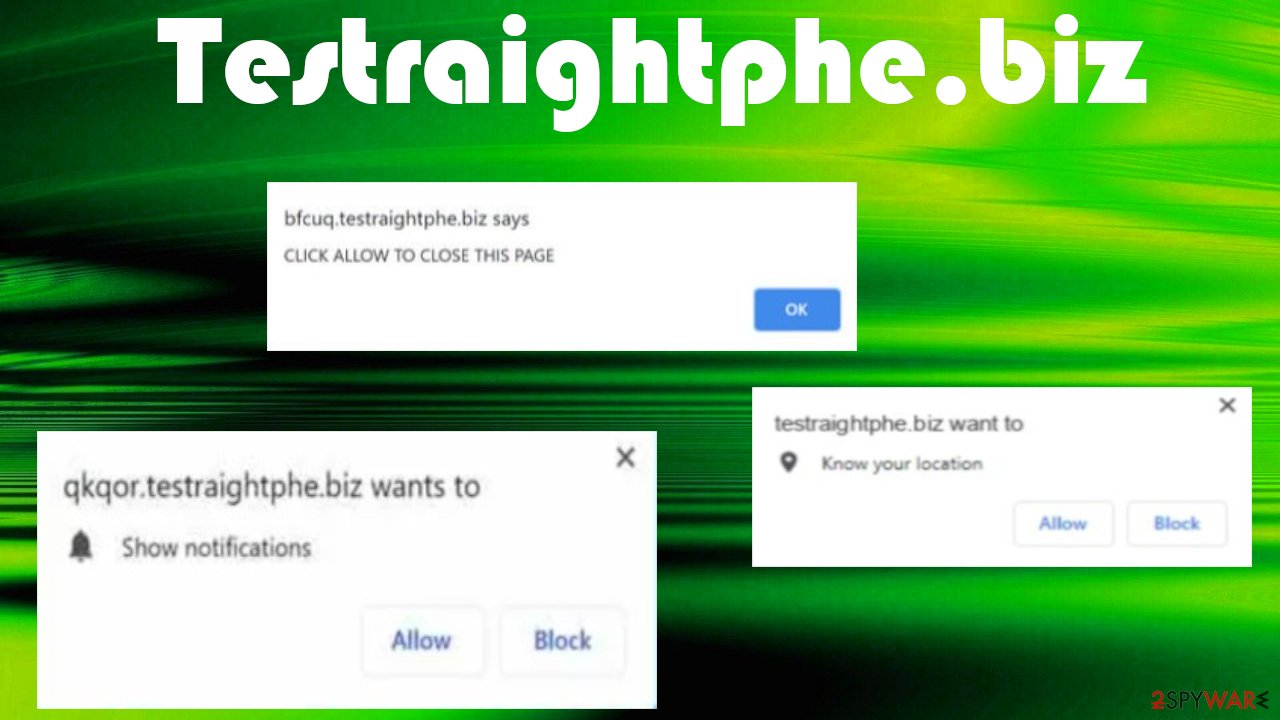
Therefore, we advise against pressing the Allow button on any sites, apart from the ones you visit voluntarily and want to receive their alerts. To remove notifications, you should use reliable anti-malware software, such as the SpyHunter 5Combo Cleaner and Malwarebytes. Perform a full system scan, and any of these free security tools will do the dirty work for you.
After Testraightphe.biz removal, you need to take care of your device's system's overall health because infections can cause havoc on the system files and settings. According to cybersecurity experts,[1] the most effective tool to fix any system-related issues and delete tracking cookies in the process is the all-in-one FortectIntego system diagnostics software.
Beware of deceptive ads popping up on shady websites
People rarely download and install potentially unwanted programs of their own volition. That's why PUP developers use various stealthy techniques to spread adware, browser hijackers, and other creations of theirs. Apart from software bundling,[2] deceptive ads are one the most popular used techniques.
These ads are usually displayed on shady websites that want to earn a quick buck by promoting questionable software. Some deceptive ads might state that you have an infection and you need to download a specific tool to get rid of it, or that you need to update your drivers or similar lies.
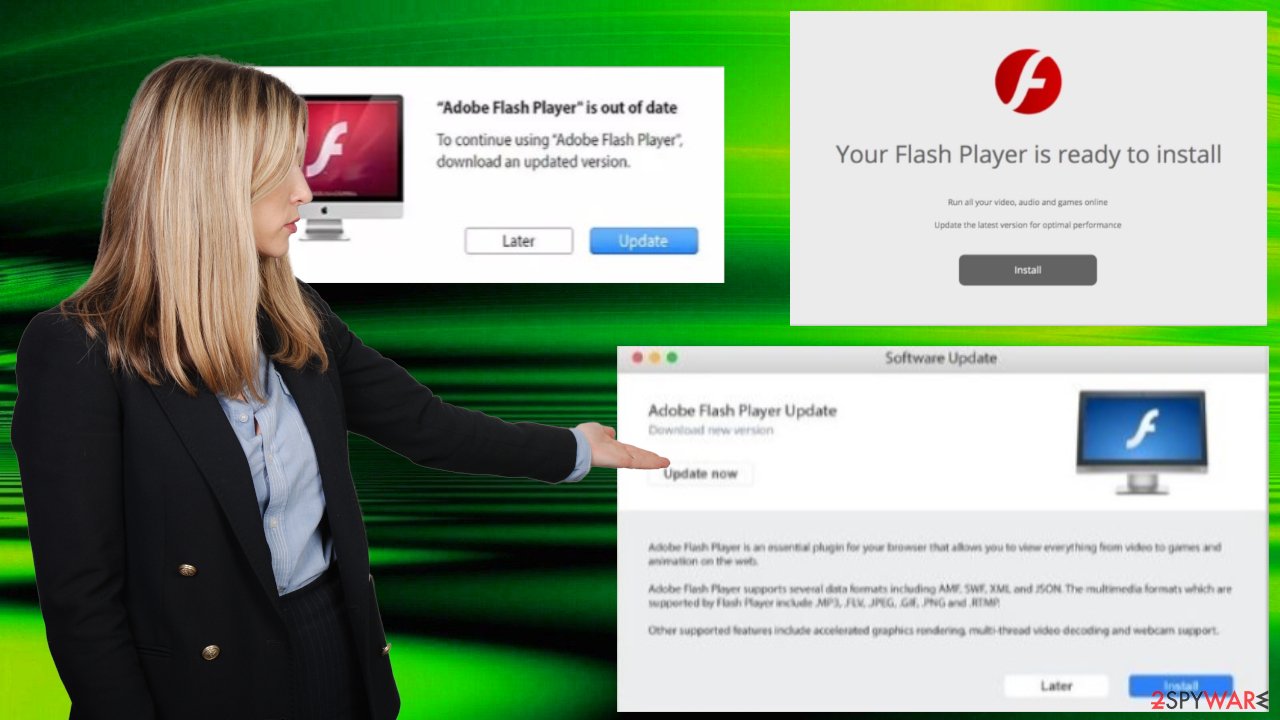
Please don't fall for such tricks as you might end up not only with PUPs but with severe malware,[3] such as Trojans, ransomware, or others. Also, please don't believe ads stating that you need to update your Flash Player as this software is discontinued and will only contain some sort of infection.
Remove virus and notifications safely by using our free guides
There's a myriad of sites like Testraightphe.biz, so be cautious when pressing the Allow button. So please remember to accept notifications only from legitimate sources in the future as it's a great way to receive amazing deals, get the latest sports updates or breaking news.
Trustworthy anti-malware software is a must these days as more and more infections are created daily. A proper security tool will not only remove malware from your device along with any suspicious files or apps but will block dangerous pages, PUPs, and malware.
Although, anti-malware tools can't fix your system files, such as the Registry, and can't modify your browsers. Thus you will need to finish removal manually by deleting its notifications from your browser. To make it easier, we've posted guides for Chrome, Safari, and other browsers below.
You may remove virus damage with a help of FortectIntego. SpyHunter 5Combo Cleaner and Malwarebytes are recommended to detect potentially unwanted programs and viruses with all their files and registry entries that are related to them.
Getting rid of Testraightphe.biz. Follow these steps
Stop browser notifications
Remove unwanted notifications from Google Chrome (desktop):
- Open Google Chrome browser and go to Menu > Settings.
- Scroll down and click on Advanced.
- Locate Privacy and security section and pick Site Settings > Notifications.

- Look at the Allow section and look for a suspicious URL.
- Click the three vertical dots next to it and pick Block. This should remove unwanted notifications from Google Chrome.

Remove unwanted notifications from Google Chrome (Android):
- Open Google Chrome and tap on Settings (three vertical dots).
- Select Notifications.
- Scroll down to the Sites section.
- Locate the unwanted URL and toggle the button to the left (Off setting).

Remove unwanted notifications from Mozilla Firefox:
- Open Mozilla Firefox and go to Menu > Options.
- Click on Privacy & Security section.
- Under Permissions, you should be able to see Notifications. Click the Settings button next to it.

- In the Settings – Notification Permissions window, click on the drop-down menu by the URL in question.
- Select Block and then click on Save Changes. This should remove unwanted notifications from Mozilla Firefox.

Remove unwanted notifications from Safari:
- Click on Safari > Preferences…
- Go to the Websites tab and, under General, select Notifications.
- Select the web address in question, click the drop-down menu and select Deny.

Remove unwanted notifications from MS Edge:
- Open Microsoft Edge, and click the Settings and more button (three horizontal dots) at the top-right of the window.
- Select Settings and then go to Advanced.
- Under Website permissions, pick Manage permissions and select the URL in question.

- Toggle the switch to the left to turn notifications off on Microsoft Edge.

Remove unwanted notifications from MS Edge (Chromium):
- Open Microsoft Edge, and go to Settings.
- Select Site permissions.
- Go to Notifications on the right.
- Under Allow, you will find the unwanted entry.
- Click on More actions and select Block.

Remove unwanted notifications from Internet Explorer:
- Open Internet Explorer, and click on the Gear icon at the top-right of the window.
- Select Internet options and go to the Privacy tab.
- In the Pop-up Blocker section, click on Settings.
- Locate web address in question under Allowed sites and pick Remove.

Uninstall from Windows
Instructions for Windows 10/8 machines:
- Enter Control Panel into Windows search box and hit Enter or click on the search result.
- Under Programs, select Uninstall a program.

- From the list, find the entry of the suspicious program.
- Right-click on the application and select Uninstall.
- If User Account Control shows up, click Yes.
- Wait till uninstallation process is complete and click OK.

If you are Windows 7/XP user, proceed with the following instructions:
- Click on Windows Start > Control Panel located on the right pane (if you are Windows XP user, click on Add/Remove Programs).
- In Control Panel, select Programs > Uninstall a program.

- Pick the unwanted application by clicking on it once.
- At the top, click Uninstall/Change.
- In the confirmation prompt, pick Yes.
- Click OK once the removal process is finished.
Delete from macOS
Remove items from Applications folder:
- From the menu bar, select Go > Applications.
- In the Applications folder, look for all related entries.
- Click on the app and drag it to Trash (or right-click and pick Move to Trash)

To fully remove an unwanted app, you need to access Application Support, LaunchAgents, and LaunchDaemons folders and delete relevant files:
- Select Go > Go to Folder.
- Enter /Library/Application Support and click Go or press Enter.
- In the Application Support folder, look for any dubious entries and then delete them.
- Now enter /Library/LaunchAgents and /Library/LaunchDaemons folders the same way and terminate all the related .plist files.

Uninstall from Android
Uninstall unwanted programs from Android device:
- Go to Settings -> Apps/Applications.
- Expand the full list of the installed apps.
- Scroll through the list and tap on a suspicious application once.
- Tap on it and select Uninstall.

- Reboot the device.
Clear Storage and data files on Android from Google Chrome or other apps:
- Go to Settings > Apps/Applications.
- Expand the full list of the installed apps.
- Tap on Chrome and select Storage & cache.
- Clear storage and clear cache of the app.

If you are seeing ads on top of other apps but are not sure what is causing it, perform the following steps:
- Go to Apps/Applications.
- Tap Advanced.
- Select Special App access.
- Tap on Display over other apps.

- Eliminate apps with these access rights enabled.
Remove from Microsoft Edge
Delete unwanted extensions from MS Edge:
- Select Menu (three horizontal dots at the top-right of the browser window) and pick Extensions.
- From the list, pick the extension and click on the Gear icon.
- Click on Uninstall at the bottom.

Clear cookies and other browser data:
- Click on the Menu (three horizontal dots at the top-right of the browser window) and select Privacy & security.
- Under Clear browsing data, pick Choose what to clear.
- Select everything (apart from passwords, although you might want to include Media licenses as well, if applicable) and click on Clear.

Restore new tab and homepage settings:
- Click the menu icon and choose Settings.
- Then find On startup section.
- Click Disable if you found any suspicious domain.
Reset MS Edge if the above steps did not work:
- Press on Ctrl + Shift + Esc to open Task Manager.
- Click on More details arrow at the bottom of the window.
- Select Details tab.
- Now scroll down and locate every entry with Microsoft Edge name in it. Right-click on each of them and select End Task to stop MS Edge from running.

If this solution failed to help you, you need to use an advanced Edge reset method. Note that you need to backup your data before proceeding.
- Find the following folder on your computer: C:\\Users\\%username%\\AppData\\Local\\Packages\\Microsoft.MicrosoftEdge_8wekyb3d8bbwe.
- Press Ctrl + A on your keyboard to select all folders.
- Right-click on them and pick Delete

- Now right-click on the Start button and pick Windows PowerShell (Admin).
- When the new window opens, copy and paste the following command, and then press Enter:
Get-AppXPackage -AllUsers -Name Microsoft.MicrosoftEdge | Foreach {Add-AppxPackage -DisableDevelopmentMode -Register “$($_.InstallLocation)\\AppXManifest.xml” -Verbose

Instructions for Chromium-based Edge
Delete extensions from MS Edge (Chromium):
- Open Edge and click select Settings > Extensions.
- Delete unwanted extensions by clicking Remove.

Clear cache and site data:
- Click on Menu and go to Settings.
- Select Privacy, search and services.
- Under Clear browsing data, pick Choose what to clear.
- Under Time range, pick All time.
- Select Clear now.

Reset Chromium-based MS Edge:
- Click on Menu and select Settings.
- On the left side, pick Reset settings.
- Select Restore settings to their default values.
- Confirm with Reset.

Remove from Mozilla Firefox (FF)
Remove dangerous extensions:
- Open Mozilla Firefox browser and click on the Menu (three horizontal lines at the top-right of the window).
- Select Add-ons.
- In here, select unwanted plugin and click Remove.

Reset the homepage:
- Click three horizontal lines at the top right corner to open the menu.
- Choose Options.
- Under Home options, enter your preferred site that will open every time you newly open the Mozilla Firefox.
Clear cookies and site data:
- Click Menu and pick Settings.
- Go to Privacy & Security section.
- Scroll down to locate Cookies and Site Data.
- Click on Clear Data…
- Select Cookies and Site Data, as well as Cached Web Content and press Clear.

Reset Mozilla Firefox
If clearing the browser as explained above did not help, reset Mozilla Firefox:
- Open Mozilla Firefox browser and click the Menu.
- Go to Help and then choose Troubleshooting Information.

- Under Give Firefox a tune up section, click on Refresh Firefox…
- Once the pop-up shows up, confirm the action by pressing on Refresh Firefox.

Remove from Google Chrome
Delete malicious extensions from Google Chrome:
- Open Google Chrome, click on the Menu (three vertical dots at the top-right corner) and select More tools > Extensions.
- In the newly opened window, you will see all the installed extensions. Uninstall all the suspicious plugins that might be related to the unwanted program by clicking Remove.

Clear cache and web data from Chrome:
- Click on Menu and pick Settings.
- Under Privacy and security, select Clear browsing data.
- Select Browsing history, Cookies and other site data, as well as Cached images and files.
- Click Clear data.

Change your homepage:
- Click menu and choose Settings.
- Look for a suspicious site in the On startup section.
- Click on Open a specific or set of pages and click on three dots to find the Remove option.
Reset Google Chrome:
If the previous methods did not help you, reset Google Chrome to eliminate all the unwanted components:
- Click on Menu and select Settings.
- In the Settings, scroll down and click Advanced.
- Scroll down and locate Reset and clean up section.
- Now click Restore settings to their original defaults.
- Confirm with Reset settings.

Delete from Safari
Remove unwanted extensions from Safari:
- Click Safari > Preferences…
- In the new window, pick Extensions.
- Select the unwanted extension and select Uninstall.

Clear cookies and other website data from Safari:
- Click Safari > Clear History…
- From the drop-down menu under Clear, pick all history.
- Confirm with Clear History.

Reset Safari if the above-mentioned steps did not help you:
- Click Safari > Preferences…
- Go to Advanced tab.
- Tick the Show Develop menu in menu bar.
- From the menu bar, click Develop, and then select Empty Caches.

After uninstalling this potentially unwanted program (PUP) and fixing each of your web browsers, we recommend you to scan your PC system with a reputable anti-spyware. This will help you to get rid of Testraightphe.biz registry traces and will also identify related parasites or possible malware infections on your computer. For that you can use our top-rated malware remover: FortectIntego, SpyHunter 5Combo Cleaner or Malwarebytes.
How to prevent from getting adware
Choose a proper web browser and improve your safety with a VPN tool
Online spying has got momentum in recent years and people are getting more and more interested in how to protect their privacy online. One of the basic means to add a layer of security – choose the most private and secure web browser. Although web browsers can't grant full privacy protection and security, some of them are much better at sandboxing, HTTPS upgrading, active content blocking, tracking blocking, phishing protection, and similar privacy-oriented features. However, if you want true anonymity, we suggest you employ a powerful Private Internet Access VPN – it can encrypt all the traffic that comes and goes out of your computer, preventing tracking completely.
Lost your files? Use data recovery software
While some files located on any computer are replaceable or useless, others can be extremely valuable. Family photos, work documents, school projects – these are types of files that we don't want to lose. Unfortunately, there are many ways how unexpected data loss can occur: power cuts, Blue Screen of Death errors, hardware failures, crypto-malware attack, or even accidental deletion.
To ensure that all the files remain intact, you should prepare regular data backups. You can choose cloud-based or physical copies you could restore from later in case of a disaster. If your backups were lost as well or you never bothered to prepare any, Data Recovery Pro can be your only hope to retrieve your invaluable files.
- ^ Usunwirusa. Usunwirusa. Spyware news and security.
- ^ Bundled Software. Techopedia. Professional it insights.
- ^ Robert Izquierdo. 10 Types of Malware and How to Spot Them. Fool. Software reviews and recommendations.
